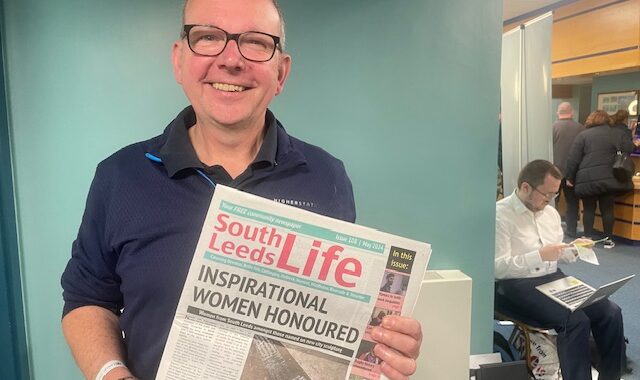In August of this year Darryl Chamberlain, editor of 853London and the Charlton Champion, broke a story about cuts to bus services in London. The story quickly went viral and was picked up by local, regional and national mainstream media outlets. Darryl’s article below illustrates the evolution of a news story and how over two months on, he’s still trying to get recognition, and payment for his work.
“It’d been a story I’d been keeping an eye on for some time. Transport for London, which is grappling with financial problems, had been making small cuts to bus services across the capital. And it was clear that one of the buses passing the end of my road, the 53, would be in the firing line some point – TfL, whose chair is London mayor Sadiq Khan, had already cut the route temporarily twice in recent years.
Never caught a 53? You should. It’s the queen of south-east London buses, taking tens of thousands of passengers each day as it wends its way from Plumstead up to Whitehall, finishing a couple of hundred metres from the end of Downing Street.
Its most important passengers are the cleaners and security guards who pack out early services. Fares are cheap, buses are reasonably frequent, and while journey times can be unpredictable, the 53 will take you to the corridors of power or a short walk from the West End.
But all that’s under threat. In London, we’re lucky enough to still have a comprehensive network of buses under public control. But that means trusting the mayor to make the right decisions. When a bus enthusiasts’ message board buzzed with rumours about the 53 being cut, I dropped a quick line to a contact.
After all, this stuff would be a big story on both of the sites I run – 853London.com, which investigates issues in Greenwich and SE London; and The Charlton Champion, a community news site for my home area.
A week or so later, a bumper Powerpoint presentation came my way. Not only was the 53 under threat – being cut back to County Hall on the wrong side of the Thames for many of its passengers – but a whole raft of other buses too. Not just in my wider south-east London patch, but across great chunks of the capital.
I contacted TfL, wrote up the story so it concentrated on not just the 53 but a couple of other nearby services, and included the whole, lengthy, list of cuts.
It quickly went viral on social media and became the site’s most most-read story of all time.
EXCLUSIVE: @TfL plans to cut routes 53, 171 and 172 in cull of central London bus routes https://t.co/V8zeWaX8fi pic.twitter.com/1YUdq3ZMNj
— 853 (@853london) August 15, 2018
And then the rest of the media started to follow it up. Keeping track of it has been a challenge – as has been getting credit for the story.
First out of the traps to follow up the story was the Hackney Gazette, which at least did link back to my original in its first story. But what was galling was having its editor tweet that its story – my story – showed how vital local papers were – even though on my patch, they’d simply never break a story like that.
Happily, after a little to-ing and fro-ing, the Gazette’s Twitter account did at least give a very generous credit to 853’s Patreon, which funds the site. Its editor was good enough to sign up to it, as did a national journalist who also credited someone else with the story.
Other local papers and even The Guardian covered the story and credited the site, which was gratifying. ITV’s London news bulletin also followed it up and asked me to come up for an interview, which I was happy to do.
But the real kick came when I was walking to the studio. I’d been sent a picture of that night’s Evening Standard. It’d completely lifted the story – including the TfL quote – for its print edition without any attribution.
Then one paper on my own patch, the News Shopper, followed up the story without any attribution (did the leak come out of nowhere?) and even stole an image from my other site, the Charlton Champion, to illustrate the story.
While stories get lifted all the time in large mainstream outlets, for small community news outlets, even just being credited if a story is followed up matters. We’re not there as a source of free news for companies with executives on six and seven-figure salaries.
This is particularly when many of us are struggling to make ends meet – I can’t see 853 earning me a full-time living, but I’m having huge trouble finding the work that will plug the gap and make my life sustainable, never mind the site.
In fact, because I did a couple of local TV news appearances about buses, breaking the story has cost me a few quid in fares to meet reporters.
I invoiced both the Standard and the Shopper. Two months on, I’m still waiting to get paid. The Standard has sent profuse apologies and says I will be paid this week.
But after promising to pay up for unauthorised use of my photo, the News Shopper has gone quiet. I’ve now made a court claim to get the money, setting me back another £25. Despite the Shopper’s editor promising to pay – and an apology from the journalist concerned, a Local Democracy Reporter funded by the BBC – Newsquest is contesting the claim. [UPDATE: Darryl was paid in early November by both the Evening Standard and The News Shopper.]
All of this is why the Value My News initiative is so important – to remind the big players that real local journalism costs money to produce, it should be paid for, and there should be no excuses for stealing content.
Hopefully it will encourage the big publishers like Newsquest to stop treating the community journalism sector with contempt and start treating us like equals.”




